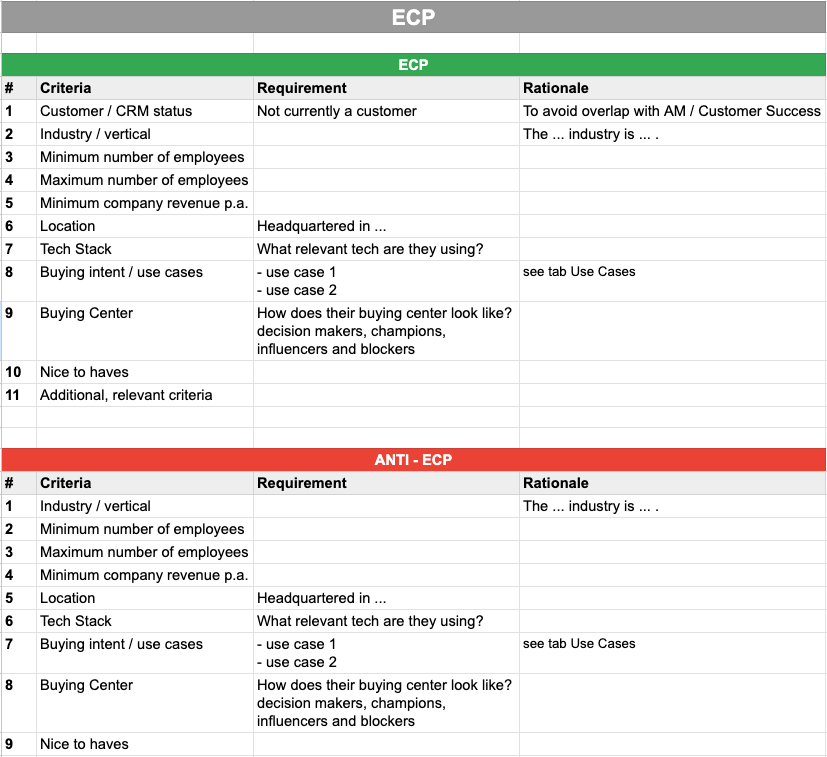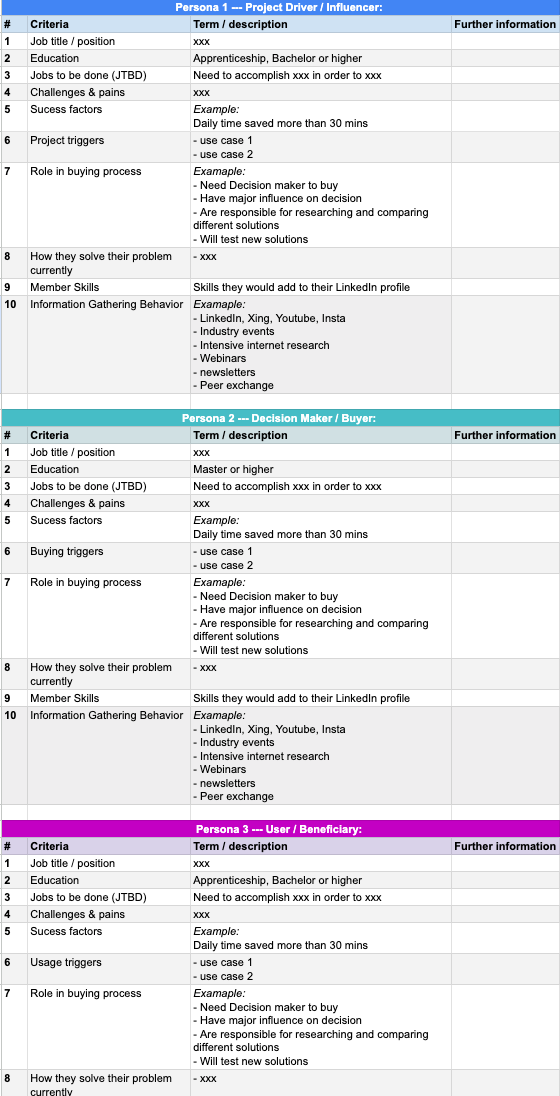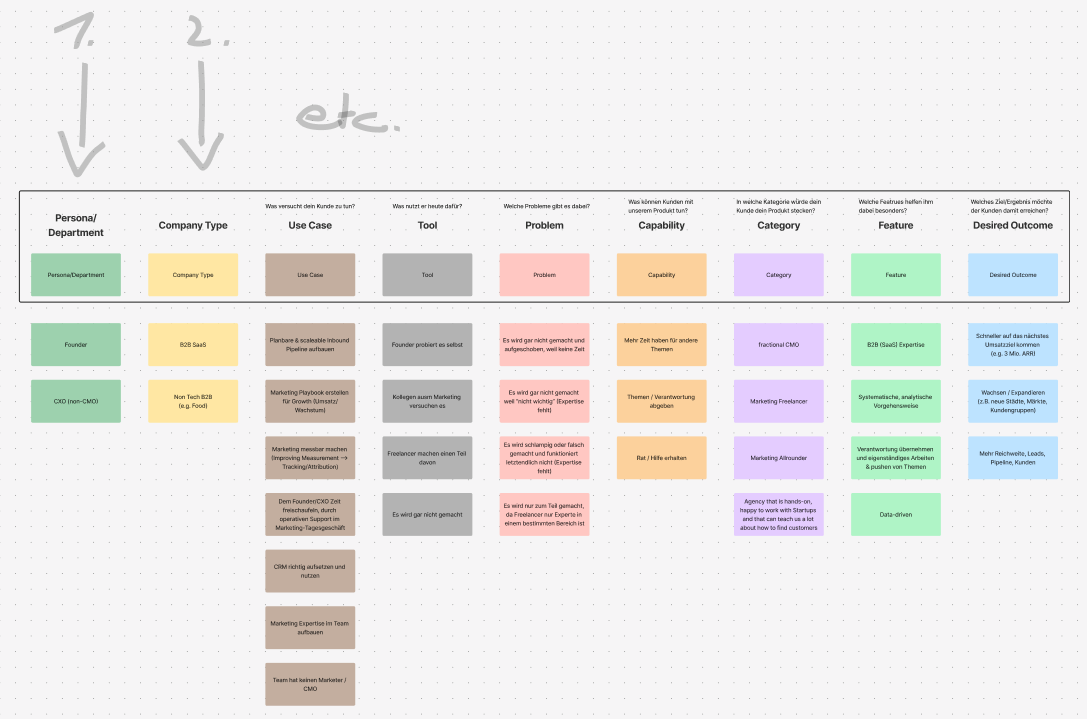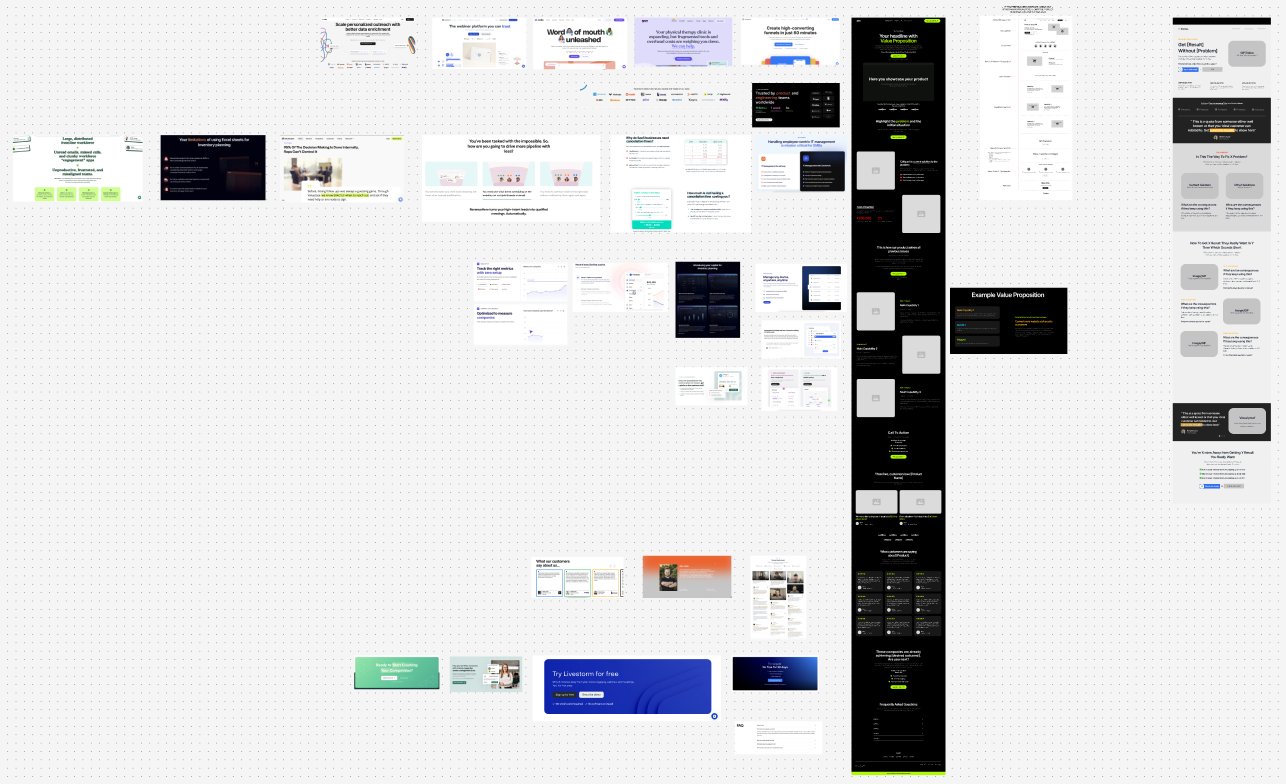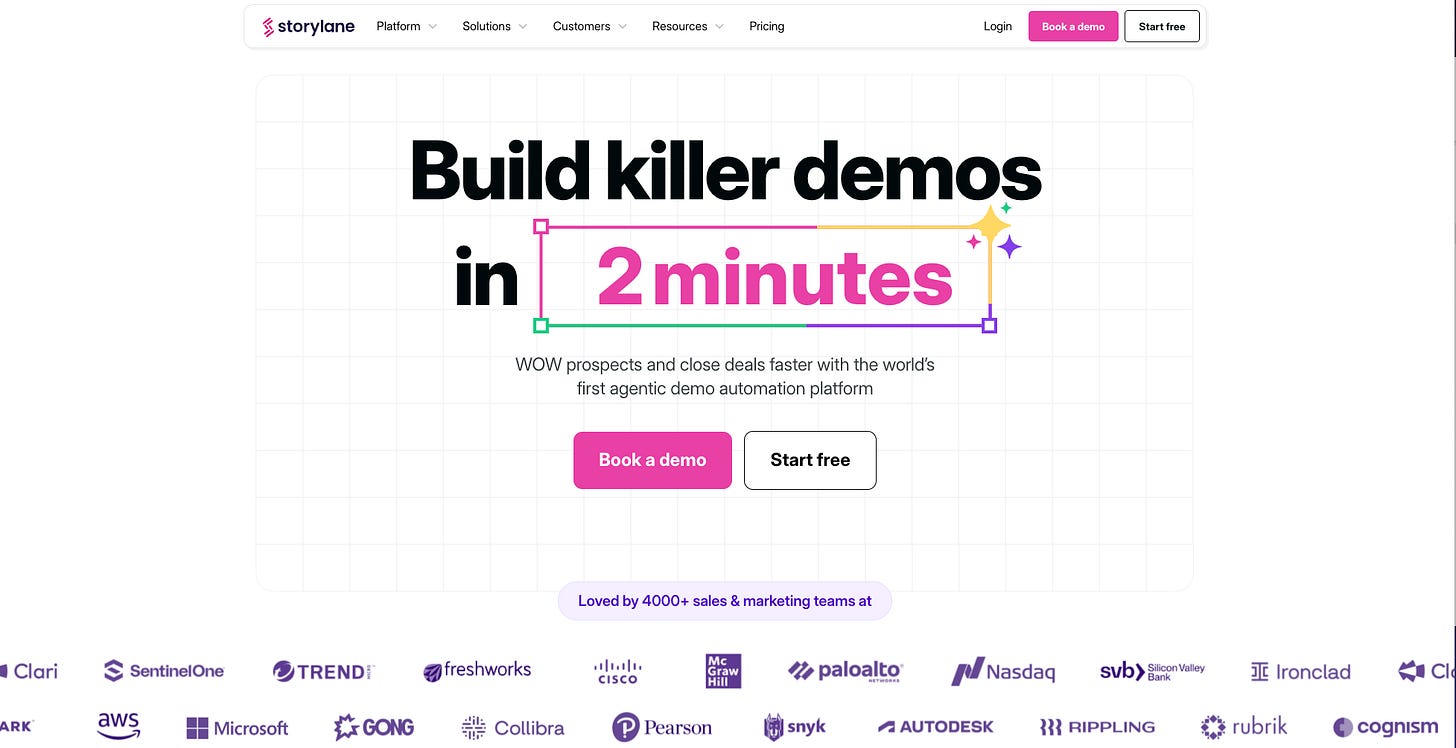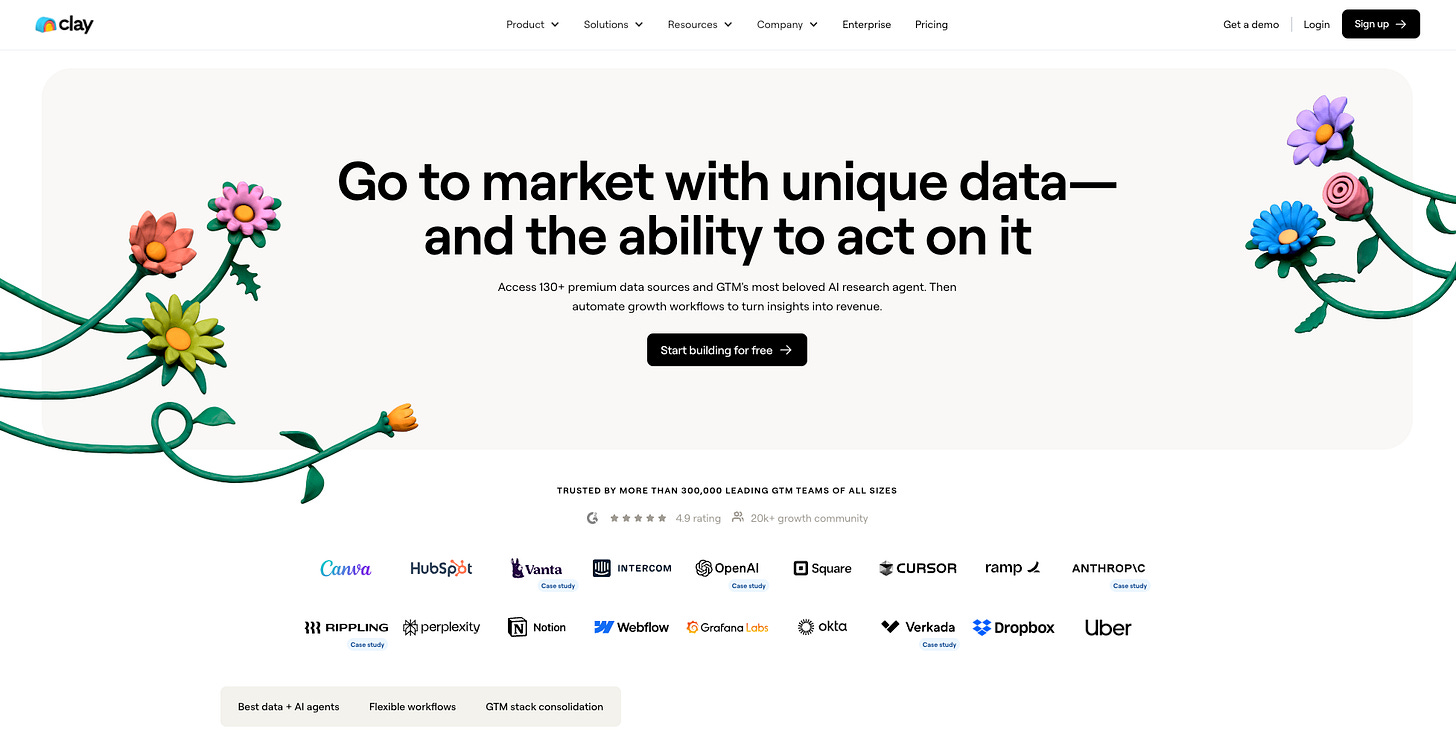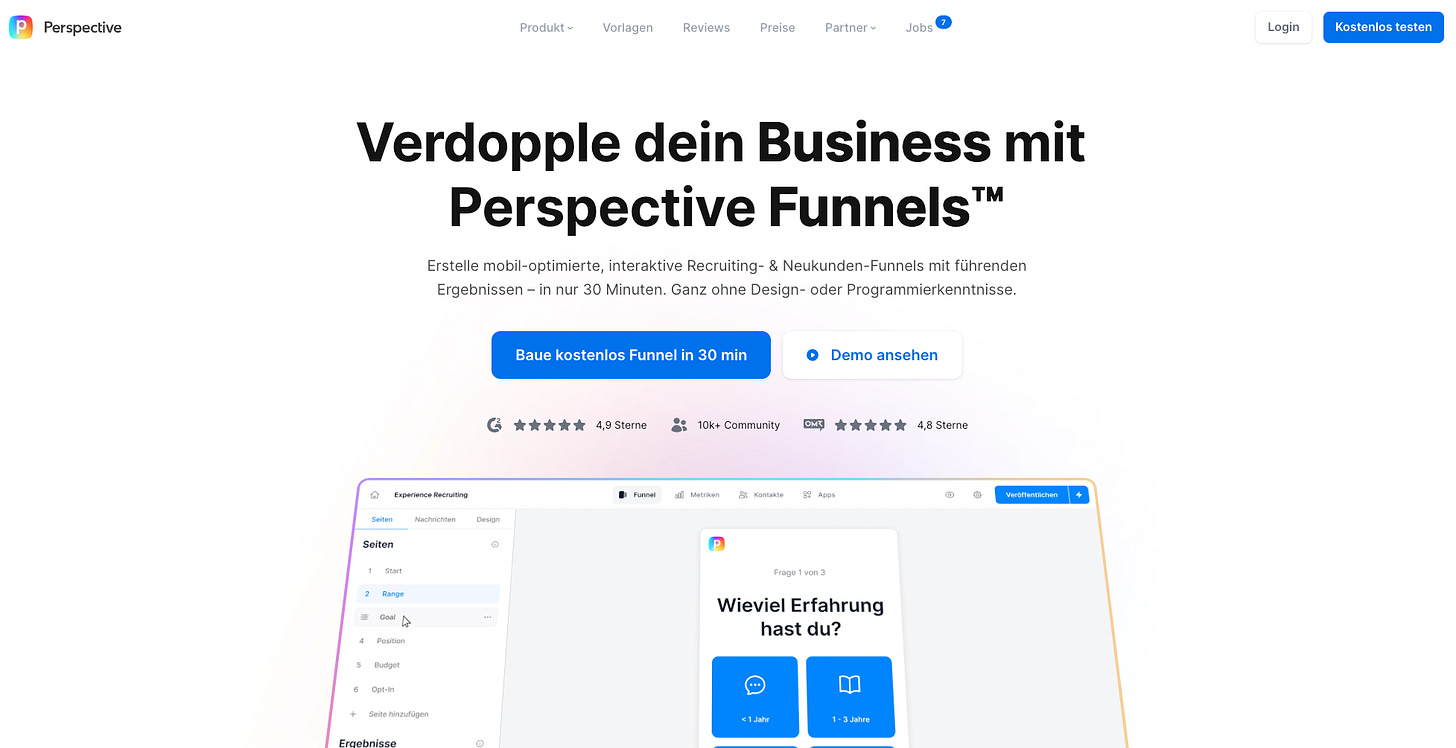Step-by-Step Guide: Optimize Your B2B SaaS Website for Conversions (incl. free templates)
Incl. free Templates for ECP, Persona, Messaging & Website
If you're an early-stage B2B SaaS founder, there's a good chance your website is confusing, too technical, too vague — or simply not converting as it should.
In this guide, I walk you through the exact process I use with clients every week to sharpen their messaging, clarify their positioning, and turn their website into a high-converting asset.
New here? Hey, I am Valentin. Early-Stage B2B SaaS & Tech Marketing Expert & Advisor.
Each week, I share practical marketing strategies, tactics and learnings designed to help you scale your B2B business to €1 million ARR and beyond 🚀
Make sure to subscribe to not miss out on any episode!
2 ways I can help scale your B2B SaaS from 0 to €1M ARR 🤝
1️⃣ 1-on-1 Marketing Advisory - For B2B founders who need strategic guidance (starting at €500/month)
2️⃣ Advisory + Execution - For B2B founders who also need hands-on support with content creation, design and execution (starting at €1500/month - includes Advisory)
🔗 Book a call via valentineiber.com
Step 1: (Re)Define Your Early Customer Profile (ECP)
Most people know this as an ICP (Ideal Customer Profile), but for early-stage startups, I call it the ECP — because it’s an evolving, early version of the ICP.
I always start by analyzing the CRM data for existing customers.
I look for the segment that:
Drives the most revenue
Has the highest upsell potential
Converts the fastest (shortest sales cycle)
Once identified, I define this customer segment using a table with the following criteria:
Customer / CRM status → Should not be in CRM yet
Industry / vertical → Which industries are you focusing on?
Minimum number of employees
Maximum number of employees
Minimum annual revenue
Location → Where is your ECP based?
Tech stack → What tech is your ECP using?
Buying intent / use cases → Why is your ECP buying? What are the use cases?
Buying center → How is the buying center looking like? Who is involved? (see also step 2- Personas)
Nice-to-haves → Anything else that identifies an ECP
Another thing I do from time to time with clients, in order to make it even more clear:
I create the ANTI-ECP.
It’s basically all criteria that an ideal customer should not have.
Grab my ICP template G-Sheet and start filling it:
Step 2: (Re)Define Personas
Based on the ECP, I build out the key buyer personas.
For B2B SaaS and tech, there are typically three personas that matter:
Project Driver / Influencer
Decision Maker / Buyer
User / Beneficiary
For each, I fill out the following criteria:
Job title / role
Education
Jobs to be done (JTBD)
Key challenges & pain points
Success criteria
Buying triggers
Role in the buying process
Current solution(s)
Skills and decision power
Information gathering behavior
Grab my ICP template G-Sheet and start filling it:
Step 3: (Re)Define Messaging & Positioning
I use a simple but effective messaging framework built on these components:
Persona
Company Type (ECP)
Use case — What is the customer trying to achieve?
Current tool — How do they do it today without your solution?
Problem — What’s broken or inefficient in their current approach?
Capability — What can they do better with your product?
Category — How would the customer categorize your product?
Features — Which features are most valuable to them?
Desired outcome — What result are they ultimately after?
👉 Then, I pull relevant insights from sales calls, CRM notes, and customer conversations to populate each point.
I start left with ‘Persona’ and add my content underneath it.
Than I got to ‘Company Type’, and so on.
It should look something like this when you’re done:
Next, I determine the right positioning approach:
A) Competitive positioning against the status quo
B) Contextual positioning anchored on the use case
Good to know: In most early-stage cases, use-case positioning works better.
Step 4: Rework the Website Structure (Wireframes)
Next, I rework the website structure visually.
I start by pasting screenshots of the current site into FigJam.
Then I sketch out new wireframes based on proven B2B SaaS website templates — structured to convert and reflect the messaging work we’ve done.
I recommend you check out this free FigJam Template for B2B SaaS Websites, by Alex & Tarik:
Step 5: Website Copy Writing
Once the messaging, positioning and wireframes are ready, I move on to writing initial website copy — starting with the Hero section.
I use this prompt to generate first copy drafts:
Help me design a suitable headline for my B2B SaaS website.
Try to include as many aspects of the target group, use cases, problems, capabilities of the solution and the outcome as possible.
Write a headline and a sub-headline in English.
Here's an example from another company of what a good headline and paragraph might look like:
Headline: The prospecting tool to automate multichannel outreach & actually get replies
Paragraph: Find leads with valid contact info and reach them across email, LinkedIn, or calls - personalized, and out of spam.
Use this information to write the copy:
Target group (ECP & Persona):
→ Description of ECP & Persona.
Use Cases:
→ Use Case 1
→ Use Case 2
etc.
Problems:
→ Problem 1
→ Problem 2
etc.
Capabilities:
→ Capability 1
→ Capability 2
etc.
Desired Outcomes:
→ Outcome 1
→ Outcome 2
etc.👉 As soon as I got some first results I iterate the copy until I nail it.
How to know when you’ve nailed it?
A website visitor should be able to answer all those questions in 10-seconds:
Who is this for?
What problem does it solve?
What’s the core use case?
What can I do better/faster than before — or better than competitors?
What pain or effort does it eliminate?
Step 5: Update Your Website & Content and Strengthen Social Proof
Finally, I implement the new messaging across the website — and double down on social proof, according to my wireframes.
Because, one additional key question the site should answer within the first 10 seconds is:
→ Who else has already benefited from this solution?
This builds trust fast and helps early-stage companies punch above their weight.
Here are three examples of homepages with strong social proof elements in the hero section:
Step 6: Launch & Measure Impact
Before I launch the website updates, I make sure my client captures all relevant metrics.
Web reporting should be at least:
Traffic
Unique Visitors
Conversion Rates (e.g. CVR Traffic to Demo)
As soon as the updates are live we track how the metrics change and make adjustments, if necessary.
Bonus: Avoid Those 5 Website Messaging & Positioning Mistakes
Check out this episode where I interviewed Thomas on how to avoid typical mistakes when it comes to website messaging.
2 ways I can help scale your B2B SaaS from 0 to €1M ARR 🤝
1️⃣ 1-on-1 Marketing Advisory - For B2B founders who need strategic guidance (starting at €500/month)
2️⃣ Advisory + Execution - For B2B founders who also need hands-on support with content creation, design and execution (starting at €1500/month - includes Advisory)
🔗 Book a call via valentineiber.com
Leave a like, if you found this episode helpful.
Cheers
Valentin
Want more hands-on tipps like this? Subscribe to the newsletter and follow me on LinkedIn.



